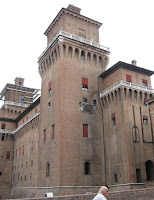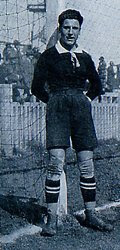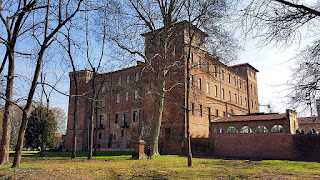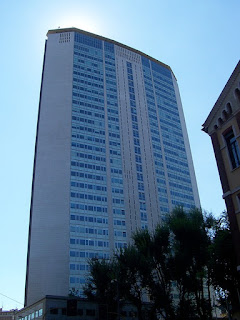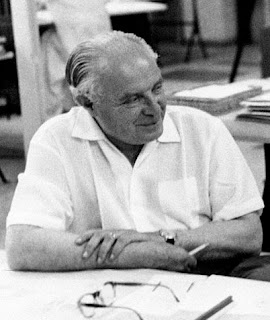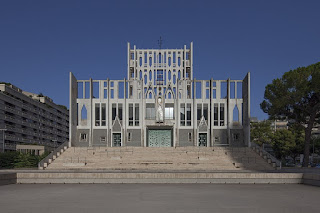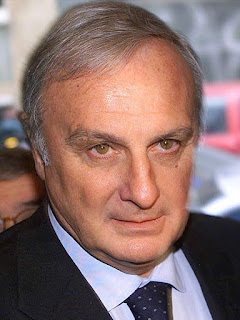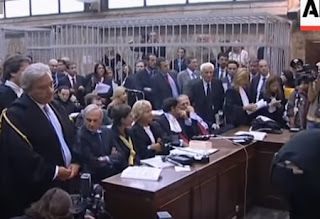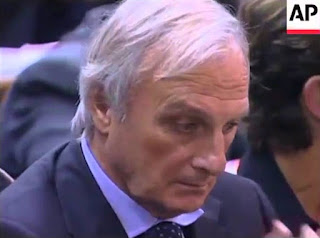Fifties sensation who died tragically young
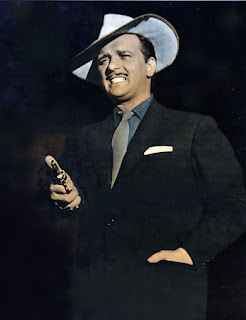 |
| Fred Buscaglione sports the 'gangster' look for which he was famous in the film I ladri (1959) |
Buscaglione’s style - he portrayed himself tongue-in-cheek as a sharp-suited gangster with a taste for whiskey and women - caught the imagination of an Italian public desperate to be entertained after the austerity of Fascism, when all ‘foreign’ music was banned.
He formed a partnership with the writer Leo Chiosso after their first collaboration, on a song called Che bambola (What a Babe!), resulted in more than one million record sales, catapulting Buscaglione to fame.
They had several more hits, including Love in Portofino, which was covered by Andrea Bocelli in 2013 as the title track from an album.
Born Ferdinando Buscaglione, he was from a creative family. His father was a painter and his mother a piano teacher. They enrolled their son at the Giuseppe Verdi Conservatory in Turin at the age of 11 but by his teens Buscaglione had adopted jazz as his passion.
 |
| The songwriter Leo Chiosso collaborated with Fred Buscaglione in his musical and movie career |
Although he was an enemy prisoner, his captors recognised his musical talent and he was allowed to play in the orchestra of an American radio station broadcasting from Cagliari. The experience gave him the chance to learn much about American music, particularly swing and the big band sound.
After the war, he made his way back to Turin, living in an apartment in Via Eusebio Bava in the Vanchiglia district a short distance from the centre of the city. He formed his own group, the Asternovas, and married a girl he met while on tour in Switzerland.
He and Chiosso became reacquainted, the latter having returned to Turin with memories of hearing Buscaglione performing on forces radio. It was Chiosso, an avid reader of American crime fiction, who encouraged him to develop his ‘gangster’ persona, for which he began sporting a Clark Gable mustache.
| Buscaglione's wrecked Ford Thunderbird after the collision in Rome that cost him his life |
Buscaglione made the most of his fame. He had more hits from the pen of Leo Chiosso with such songs as Teresa non sparare (Theresa, Don't Shoot!), Love in Portofino and Whisky facile (Easy Whiskey), signed commercial advertising contracts and appeared in TV show and movies, including the 1960 comedy Noi duri (Tough Guys), which Chiosso scripted and which starred the Italian comic maestro Totò, as well as a beautiful young Italian actress, Scilla Gabel, with whom Buscaglione was romantically linked.
He appeared to have the world at his feet but tragedy struck in the early hours of February 3, 1960 when his lilac Ford Thunderbird convertible was in collection with a truck on a street in Rome, near the US Embassy. He was taken to hospital but his injuries were so severe he could not be saved.
Only a few hours earlier, he had been out for dinner with friends and had met the upcoming star Mina Mazzini to discuss possible collaboration. Mina would go on to become Italy’s all-time biggest selling female artist.
Buscaglione’s funeral took place in Turin with tens of thousands of fans lining the streets. His body was buried at the Monumental Cemetery in the city.
 |
| The futuristic Luigi Einaudi Campus of the University of Turin dominates the Vanchiglia neighbourhood |
The Vanchiglia neighbourhood of Turin, where Buscaglione lived immediately after his return from captivity in Sardinia, is an historic district a few streets away from the Palazzo Reale and the Mole Antonelliana. It is best known for the presence of the Luigi Einaudi Campus of the University of Turin and therefore has a high student population. With this has come an explosion in the number of bars and cafés and a growing music scene.
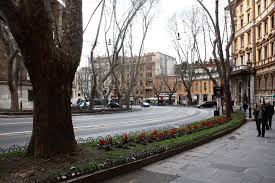 |
| The Via Vittorio Veneto was one of Rome's most fashionable streets in its heyday |
Rome's US Embassy is on Via Vittorio Veneto, commonly known as the Via Veneto, is one of the capital's most famous, elegant and expensive streets. The street is named after the 1918 Battle of Vittorio Veneto, a decisive Italian victory of World War I, and immortalised by Federico Fellini's 1960 film La Dolce Vita, which celebrated its heyday in the '50s and '60s when its bars and restaurants attracted Hollywood stars and jet set personalities. Some of Rome's most renowned cafés and five star hotels, such as Café de Paris, Harry's Bar, the Regina Hotel Baglioni and the Westin Excelsior are located in Via Veneto.
More reading:
Leo Chiosso - the other half of the hit-creating 1950s partnership
The comedic genius of Totò
Italy's all-time biggest-selling female star
Also on this day:
1553: The birth of botanist Prospero Alpini
1941: The birth of actor Franco Nero
1955: The birth of composer Ludovico Einaudi
Home


